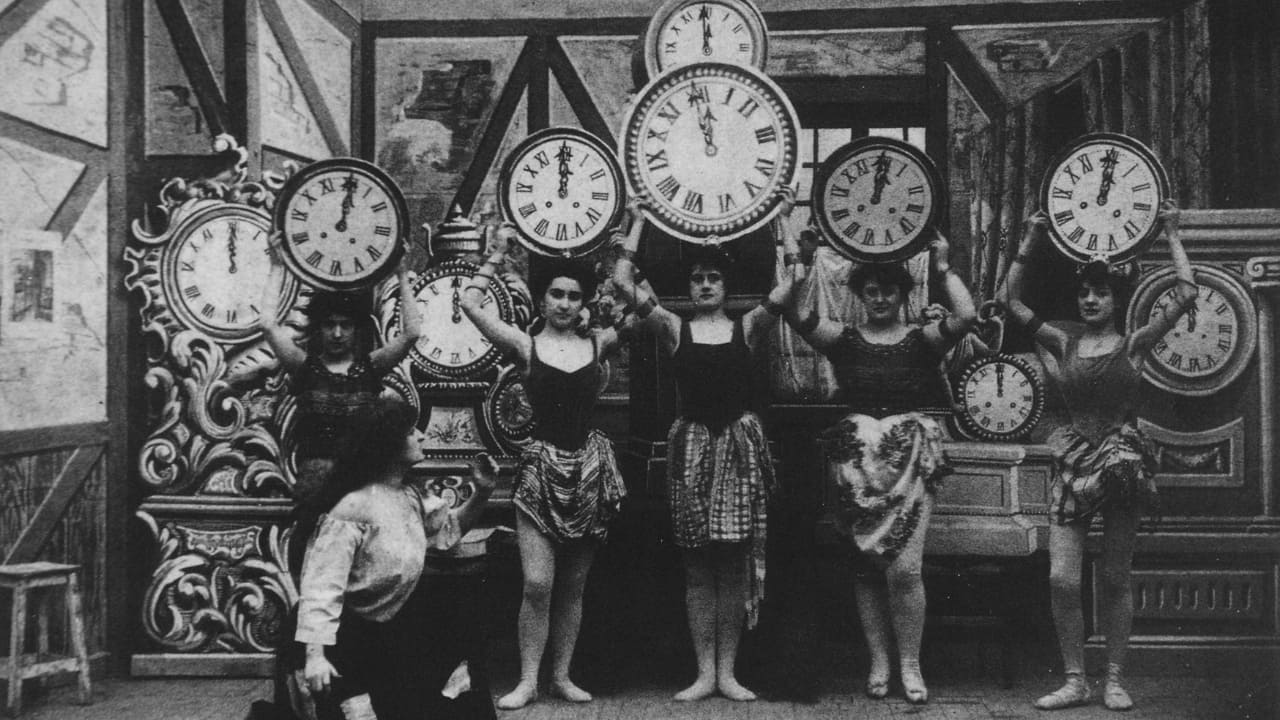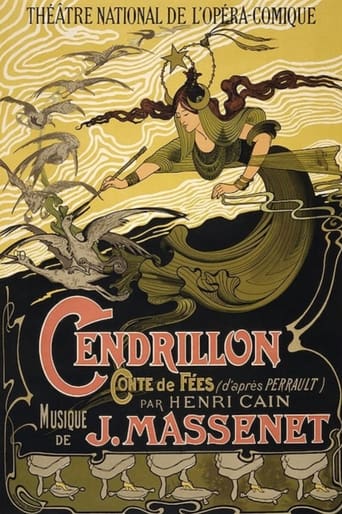Roy Hart
If you're interested in the topic at hand, you should just watch it and judge yourself because the reviews have gone very biased by people that didn't even watch it and just hate (or love) the creator. I liked it, it was well written, narrated, and directed and it was about a topic that interests me.
Cineanalyst
This is likely the most advanced story film of the 19th Century. In the print available on DVD today, there are four distinct scenes with dissolves as transitions. The popularity of this film encouraged its creator Georges Méliès to continue making similar longer story films; "Cinderella" is the first of what early cinema historians have termed Féeries (or fairy films), to distinguish them from the generally shorter, less narrative-driven trick films, which Méliès and others also made many of. Central to the fairy film is, of course, the fairy godmother. She (played here, as with other such films, by Méliès's lover Jeanne d'Alcy) is the magician-director's surrogate, creating the tricks and manipulating the narrative. Subsequent Méliès Féeries would be more polished and elaborate, including "Bluebeard" (1901), "Kingdom of the Fairies" (1903) and, to an extent, "A Trip to the Moon" (1902), although it doesn't feature a central fairy godmother. "Cinderella", however, is an important landmark for getting these story films started.The film is also generally credited as the first to feature dissolves as transitions—a device that has its antecedent in magic lantern shows. Because of it, many early filmmakers adopted this technique (done in camera back then, by the way), including Ferdinand Zecca and the Pathé Company and, for a while, even Edwin S. Porter. Direct cuts didn't become the dominant scene transition until a few years later, once the story film became common and other modern continuity and narrative techniques came into use. Most films of the 19th Century consisted of a single shot-scene (mostly actualities, which were popularized by the Lumiére Company). The earliest two-scene fictional story subject I know of was from the previous year, "Come Along Do!" (1898) (only the first scene of this survives today), which is suspected to have used a direct cut. Dissolves would prove to be too discontinuous of a transition, but they work just as well for the stagy, stationary shot-scene style of narrative introduced by Méliès. Notably, another early story film pioneer, George Albert Smith, was already experimenting with direct cuts and insert shots in 1899, as evidenced by "The Kiss in the Tunnel".Another relic of its time, the scene after the hour of midnight, in Cinderella's bedroom, sort of features two scenes in one. There's the dance of the clocks nightmare and then a jump cut to the sudden appearance of Cinderella's stepsisters being in the same room with the prince knocking at the door, for the prince and the slipper scene. The final scene is also a two-in-one, but not as jarringly disjointed, since it uses theatrical set transitions to reveal the final tableaux, a truly theatrical carryover. Indeed, this cinematic version was inspired by stage adaptations.Part of the first scene offers a brief glimpse of what this film looked like hand-colored (most of Méliès's films were hand-colored, or offered to be at extra cost, as were many other early films); the rest of the remaining footage survives in black and white. From the beginning and throughout the short film, Méliès shows off his typical trick effects, mostly substitution-splices (or stop-substitutions) here, in addition to theatrical tricks. The best part, I think, is the dance of the clocks nightmare, which terrorizes Cinderella.Méliès made another version of Cinderella in 1912, available in the same Flicker Alley set, but that one doesn't have the historical weight of this. Also, see the Mary Pickford 1914 "Cinderella" for an interesting comparison of clock nightmares.(Note: This film was considered for many years to be partially or entirely lost. Some sources say the original film was as long as 2,000 feet, which is difficult to believe. Other historians give the more believable listing of around 120 meters (or nearly 400 feet) (Richard Abel, "The Ciné Goes to Town", gives this length), which seems to be about the length of the film available today, which lasts under 6 minutes. The print shows its age, with some deterioration, but is quite viewable.)
MartinHafer
My score of 10 is relative to other productions during this very early era in film as well as director Georges Méliès' other films. If you were to compare it to later silent films, then CENDRILLON will come up very, very short due to its very archaic style. And this type of comparison just wouldn't be fair, as non-stationary cameras, composition and detailed scripts were well in the future. But, for 1899, this is amazing because it introduces dissolves to go from one scene to another, a plot telling an actual story, as well as actual sets--things not used much around 1900. Most of the films circa 1900 were dull and short--only a minute or two long and featured people doing horribly mundane things--like feeding a baby or watering the lawn (seriously).Now this story, while amazing for 1899, is not without many problems. The first portion that set the context for the story seems to either be missing or Méliès just assumed the audience understood it and skipped it. Also, while the first moments of the film are hand-colored, this disappears very quickly--perhaps it comes from piecing two or more copies together to make this film. And additionally, at times the people had no idea what to do, so they did some weird things--like have lots and lots of clocks and elves (why?!?!) as well as a somewhat impromptu dance number at the end. Rough? Yes, but still compared to what else was out there, this was the best sort of film available...period. For film historians, this and the rest of Méliès' films are a must.By the way, to see just how far films had progressed, try also watching the 1914 version starring Mary Pickford. It stands up much better today and is a truly magnificent film even almost a hundred years later.

